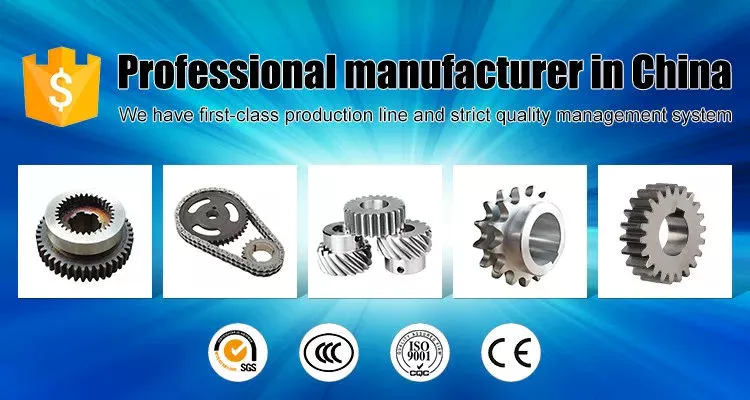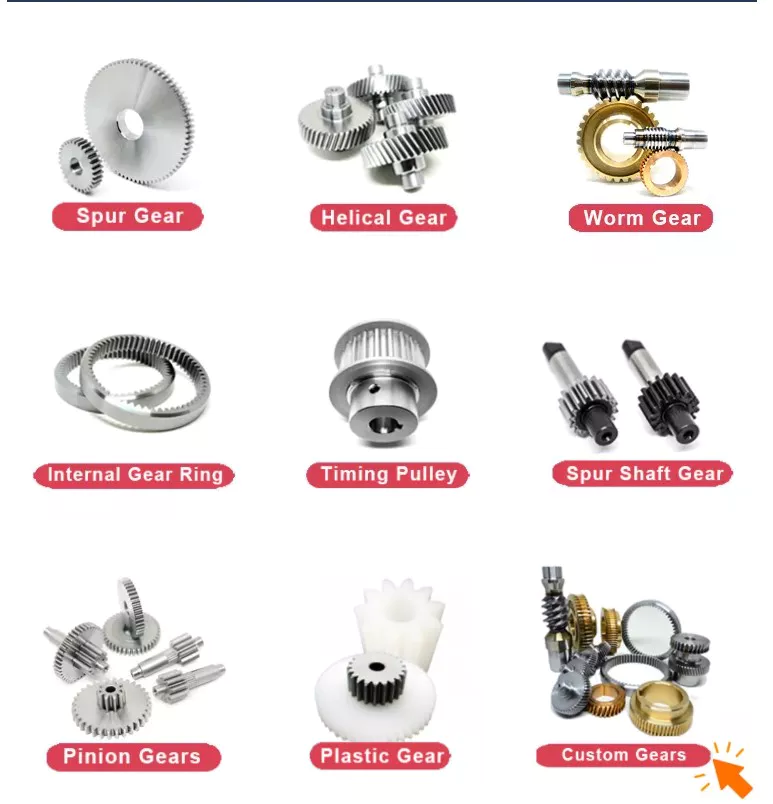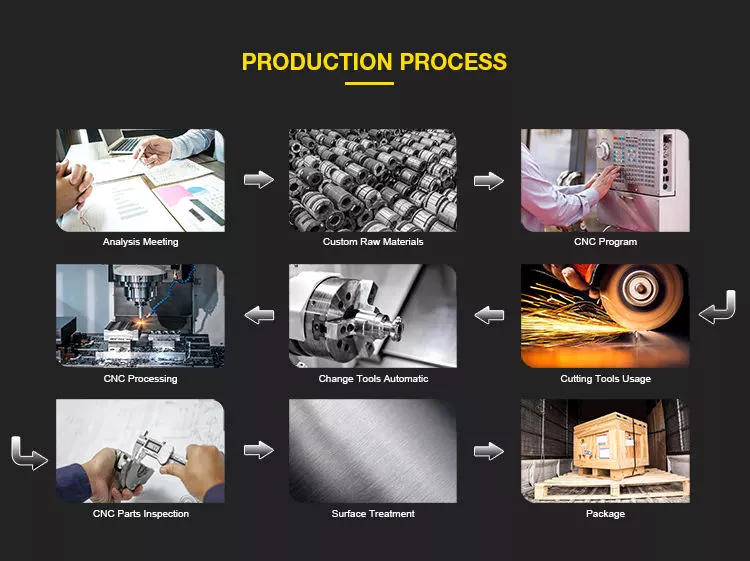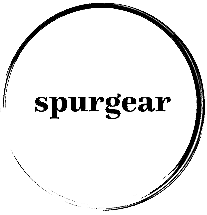Solution Description
Planetary Reduction Stepper motor Sequence
Planetary stepper motor has the attributes of high precision, high rigidity, substantial load, higher efficiency, large speed ratio, large existence, minimal inertia, minimal vibration, reduced noise, low temperature increase, gorgeous look, gentle construction, simple set up, exact positioning and so on.
Technicaldata:
| Gear Ratio | L1 Size(mm) |
Performance | Rated Torque | Permissible Torque(Max) | Sound (dB) | Backlash min. at No-load |
Weight(g) | |
| 1 Stage | 3.seventy one | 25.6 | 90% | 0.3N.m | 1N.m | @1m ≤60dB |
≤60arcmin |
113 |
| five.eighteen | ||||||||
| six.75 | ||||||||
| 2 Phase | fourteen | 34 | 81% | 1.2N.m | 3.5N.m | 145 | ||
| 19 | ||||||||
| 27 | ||||||||
| 35 | ||||||||
| forty six | ||||||||
| 3 Stage | fifty one | 42 | 73% | 2.5N.m | 7.5N.m | 184 | ||
| seventy one | ||||||||
| 100 | ||||||||
| 139 | ||||||||
| 181 | ||||||||
| 236 | ||||||||
| 307 | ||||||||
- Stepper motor Electrical Technical specs:
| Collection Product |
Rated Current (A) |
Stage Resistance (Ω) |
Section Inductance (mH) |
Lead Wire (No.) |
Holding Torque (N.cm) |
L Motor Length L (mm) |
Rotor Inertia (g.cm²) |
Motor Fat (g) |
Step Angle (°) |
| 14HS2402 | .eight | four.2 | 4.5 | 4 | 14 | 31 | 12 | one hundred twenty | 1.8 |
| 14HS3402 | .8 | 7.5 | 9.eight | 20 | 39 | 18 | one hundred sixty | ||
| 14HS5420 | two. | 1.6 | 2.three | 40 | 58 | 26 | 230 |
*, *Be aware:We can manufacture products according to customer’s demands.
Proportions(Device: mm)
Description
We are a guide motor manufacture in China. Our merchandise variety above HB stepper motor, BLDC motor, servo motors and driver techniques.
one) Our products have good good quality and fairly competitive price.
2) We can do personalized-manufactured alterations as customers’ requirements.
Software
Textile equipment, engraving equipment
Security, 4g antenna, photo voltaic strength
Medical equipment, industrial automation
Car, workplace automation
Printing tools, advertising and marketing gear etc.
Payments
one) We can acknowledge EXW, FOB
2) Payment have to be produced ahead of shipment.
3) Import obligations, taxes and charges are not provided in the merchandise value or shipping charges. These costs are the buyer’s duty.
Shipping
one) We only ship to your confirmed handle. You should make confident your shipping and delivery tackle is proper just before buy.
two) Most orders will be transported out in 3-7 operating days upon payment confirmation.
three) Shipping and delivery normally will take 7-twenty five operating times. Most of the objects will delivery in 2 weeks, whilst there will be a hold off for some thing we can not management (such as the poor temperature). If it occurs, just get in touch with us, we will support you verify and solve any issue.
three) Please examine the deal upon receipt, if there are some damages, remember to make contact with us immediately.
Comments & Refund
1) Comments is critical to us, if you have any issue with our goods, please contact us, our technician will give you useful advises.
2) When you have the parcel and not content with the merchandise or it is other dilemma, make sure you explain to us right away, and offer us a photograph showing the detail.
3) Any explanation necessitating for all refund. Things should be in first problem and no physical hurt. Purchaser accountable for all shipping price.
Certification
IOS9001,CE,UL,EMC
If you want a lot more info, you should get in touch with with us. We will attach excellent importance to your any issues. Hope we could establish a lengthy-phrase effective cooperation.
| Application: | Welding |
|---|---|
| Speed: | Low Speed |
| Number of Stator: | Two-Phase |
| Excitation Mode: | HB-Hybrid |
| Function: | Driving |
| Number of Poles: | 4 |
###
| Samples: |
US$ 36/Piece
1 Piece(Min.Order) |
|---|
###
| Customization: |
Available
|
|---|
###
| Gear Ratio | L1 Length(mm) |
Efficiency | Rated Torque | Permissible Torque(Max) | Noise (dB) | Backlash min. at No-load |
Weight(g) | |
| 1 Stage | 3.71 | 25.6 | 90% | 0.3N.m | 1N.m | @1m ≤60dB |
≤60arcmin |
113 |
| 5.18 | ||||||||
| 6.75 | ||||||||
| 2 Stage | 14 | 34 | 81% | 1.2N.m | 3.5N.m | 145 | ||
| 19 | ||||||||
| 27 | ||||||||
| 35 | ||||||||
| 46 | ||||||||
| 3 Stage | 51 | 42 | 73% | 2.5N.m | 7.5N.m | 184 | ||
| 71 | ||||||||
| 100 | ||||||||
| 139 | ||||||||
| 181 | ||||||||
| 236 | ||||||||
| 307 | ||||||||
###
| Series Model |
Rated Current (A) |
Phase Resistance (Ω) |
Phase Inductance (mH) |
Lead Wire (No.) |
Holding Torque (N.cm) |
L Motor Length L (mm) |
Rotor Inertia (g.cm²) |
Motor Weight (g) |
Step Angle (°) |
| 14HS2402 | 0.8 | 4.2 | 4.5 | 4 | 14 | 31 | 12 | 120 | 1.8 |
| 14HS3402 | 0.8 | 7.5 | 9.8 | 20 | 39 | 18 | 160 | ||
| 14HS5420 | 2.0 | 1.6 | 2.3 | 40 | 58 | 26 | 230 |
| Application: | Welding |
|---|---|
| Speed: | Low Speed |
| Number of Stator: | Two-Phase |
| Excitation Mode: | HB-Hybrid |
| Function: | Driving |
| Number of Poles: | 4 |
###
| Samples: |
US$ 36/Piece
1 Piece(Min.Order) |
|---|
###
| Customization: |
Available
|
|---|
###
| Gear Ratio | L1 Length(mm) |
Efficiency | Rated Torque | Permissible Torque(Max) | Noise (dB) | Backlash min. at No-load |
Weight(g) | |
| 1 Stage | 3.71 | 25.6 | 90% | 0.3N.m | 1N.m | @1m ≤60dB |
≤60arcmin |
113 |
| 5.18 | ||||||||
| 6.75 | ||||||||
| 2 Stage | 14 | 34 | 81% | 1.2N.m | 3.5N.m | 145 | ||
| 19 | ||||||||
| 27 | ||||||||
| 35 | ||||||||
| 46 | ||||||||
| 3 Stage | 51 | 42 | 73% | 2.5N.m | 7.5N.m | 184 | ||
| 71 | ||||||||
| 100 | ||||||||
| 139 | ||||||||
| 181 | ||||||||
| 236 | ||||||||
| 307 | ||||||||
###
| Series Model |
Rated Current (A) |
Phase Resistance (Ω) |
Phase Inductance (mH) |
Lead Wire (No.) |
Holding Torque (N.cm) |
L Motor Length L (mm) |
Rotor Inertia (g.cm²) |
Motor Weight (g) |
Step Angle (°) |
| 14HS2402 | 0.8 | 4.2 | 4.5 | 4 | 14 | 31 | 12 | 120 | 1.8 |
| 14HS3402 | 0.8 | 7.5 | 9.8 | 20 | 39 | 18 | 160 | ||
| 14HS5420 | 2.0 | 1.6 | 2.3 | 40 | 58 | 26 | 230 |
How to Compare Different Types of Spur Gears
When comparing different types of spur gears, there are several important considerations to take into account. The main considerations include the following: Common applications, Pitch diameter, and Addendum circle. Here we will look at each of these factors in more detail. This article will help you understand what each type of spur gear can do for you. Whether you’re looking to power an electric motor or a construction machine, the right gear for the job will make the job easier and save you money in the long run.
Common applications
Among its many applications, a spur gear is widely used in airplanes, trains, and bicycles. It is also used in ball mills and crushers. Its high speed-low torque capabilities make it ideal for a variety of applications, including industrial machines. The following are some of the common uses for spur gears. Listed below are some of the most common types. While spur gears are generally quiet, they do have their limitations.
A spur gear transmission can be external or auxiliary. These units are supported by front and rear casings. They transmit drive to the accessory units, which in turn move the machine. The drive speed is typically between 5000 and 6000 rpm or 20,000 rpm for centrifugal breathers. For this reason, spur gears are typically used in large machinery. To learn more about spur gears, watch the following video.
The pitch diameter and diametral pitch of spur gears are important parameters. A diametral pitch, or ratio of teeth to pitch diameter, is important in determining the center distance between two spur gears. The center distance between two spur gears is calculated by adding the radius of each pitch circle. The addendum, or tooth profile, is the height by which a tooth projects above the pitch circle. Besides pitch, the center distance between two spur gears is measured in terms of the distance between their centers.
Another important feature of a spur gear is its low speed capability. It can produce great power even at low speeds. However, if noise control is not a priority, a helical gear is preferable. Helical gears, on the other hand, have teeth arranged in the opposite direction of the axis, making them quieter. However, when considering the noise level, a helical gear will work better in low-speed situations.
Construction
The construction of spur gear begins with the cutting of the gear blank. The gear blank is made of a pie-shaped billet and can vary in size, shape, and weight. The cutting process requires the use of dies to create the correct gear geometry. The gear blank is then fed slowly into the screw machine until it has the desired shape and size. A steel gear blank, called a spur gear billet, is used in the manufacturing process.
A spur gear consists of two parts: a centre bore and a pilot hole. The addendum is the circle that runs along the outermost points of a spur gear’s teeth. The root diameter is the diameter at the base of the tooth space. The plane tangent to the pitch surface is called the pressure angle. The total diameter of a spur gear is equal to the addendum plus the dedendum.
The pitch circle is a circle formed by a series of teeth and a diametrical division of each tooth. The pitch circle defines the distance between two meshed gears. The center distance is the distance between the gears. The pitch circle diameter is a crucial factor in determining center distances between two mating spur gears. The center distance is calculated by adding the radius of each gear’s pitch circle. The dedendum is the height of a tooth above the pitch circle.
Other considerations in the design process include the material used for construction, surface treatments, and number of teeth. In some cases, a standard off-the-shelf gear is the most appropriate choice. It will meet your application needs and be a cheaper alternative. The gear will not last for long if it is not lubricated properly. There are a number of different ways to lubricate a spur gear, including hydrodynamic journal bearings and self-contained gears.
Addendum circle
The pitch diameter and addendum circle are two important dimensions of a spur gear. These diameters are the overall diameter of the gear and the pitch circle is the circle centered around the root of the gear’s tooth spaces. The addendum factor is a function of the pitch circle and the addendum value, which is the radial distance between the top of the gear tooth and the pitch circle of the mating gear.
The pitch surface is the right-hand side of the pitch circle, while the root circle defines the space between the two gear tooth sides. The dedendum is the distance between the top of the gear tooth and the pitch circle, and the pitch diameter and addendum circle are the two radial distances between these two circles. The difference between the pitch surface and the addendum circle is known as the clearance.
The number of teeth in the spur gear must not be less than 16 when the pressure angle is twenty degrees. However, a gear with 16 teeth can still be used if its strength and contact ratio are within design limits. In addition, undercutting can be prevented by profile shifting and addendum modification. However, it is also possible to reduce the addendum length through the use of a positive correction. However, it is important to note that undercutting can happen in spur gears with a negative addendum circle.
Another important aspect of a spur gear is its meshing. Because of this, a standard spur gear will have a meshing reference circle called a Pitch Circle. The center distance, on the other hand, is the distance between the center shafts of the two gears. It is important to understand the basic terminology involved with the gear system before beginning a calculation. Despite this, it is essential to remember that it is possible to make a spur gear mesh using the same reference circle.
Pitch diameter
To determine the pitch diameter of a spur gear, the type of drive, the type of driver, and the type of driven machine should be specified. The proposed diametral pitch value is also defined. The smaller the pitch diameter, the less contact stress on the pinion and the longer the service life. Spur gears are made using simpler processes than other types of gears. The pitch diameter of a spur gear is important because it determines its pressure angle, the working depth, and the whole depth.
The ratio of the pitch diameter and the number of teeth is called the DIAMETRAL PITCH. The teeth are measured in the axial plane. The FILLET RADIUS is the curve that forms at the base of the gear tooth. The FULL DEPTH TEETH are the ones with the working depth equal to 2.000 divided by the normal diametral pitch. The hub diameter is the outside diameter of the hub. The hub projection is the distance the hub extends beyond the gear face.
A metric spur gear is typically specified with a Diametral Pitch. This is the number of teeth per inch of the pitch circle diameter. It is generally measured in inverse inches. The normal plane intersects the tooth surface at the point where the pitch is specified. In a helical gear, this line is perpendicular to the pitch cylinder. In addition, the pitch cylinder is normally normal to the helix on the outside.
The pitch diameter of a spur gear is typically specified in millimeters or inches. A keyway is a machined groove on the shaft that fits the key into the shaft’s keyway. In the normal plane, the pitch is specified in inches. Involute pitch, or diametral pitch, is the ratio of teeth per inch of diameter. While this may seem complicated, it’s an important measurement to understand the pitch of a spur gear.
Material
The main advantage of a spur gear is its ability to reduce the bending stress at the tooth no matter the load. A typical spur gear has a face width of 20 mm and will fail when subjected to 3000 N. This is far more than the yield strength of the material. Here is a look at the material properties of a spur gear. Its strength depends on its material properties. To find out what spur gear material best suits your machine, follow the following steps.
The most common material used for spur gears is steel. There are different kinds of steel, including ductile iron and stainless steel. S45C steel is the most common steel and has a 0.45% carbon content. This type of steel is easily obtainable and is used for the production of helical, spur, and worm gears. Its corrosion resistance makes it a popular material for spur gears. Here are some advantages and disadvantages of steel.
A spur gear is made of metal, plastic, or a combination of these materials. The main advantage of metal spur gears is their strength to weight ratio. It is about one third lighter than steel and resists corrosion. While aluminum is more expensive than steel and stainless steel, it is also easier to machine. Its design makes it easy to customize for the application. Its versatility allows it to be used in virtually every application. So, if you have a specific need, you can easily find a spur gear that fits your needs.
The design of a spur gear greatly influences its performance. Therefore, it is vital to choose the right material and measure the exact dimensions. Apart from being important for performance, dimensional measurements are also important for quality and reliability. Hence, it is essential for professionals in the industry to be familiar with the terms used to describe the materials and parts of a gear. In addition to these, it is essential to have a good understanding of the material and the dimensional measurements of a gear to ensure that production and purchase orders are accurate.


editor by czh 2023-01-01
